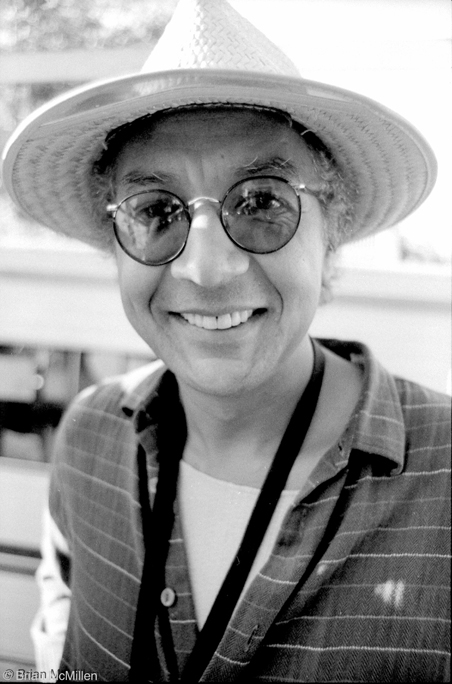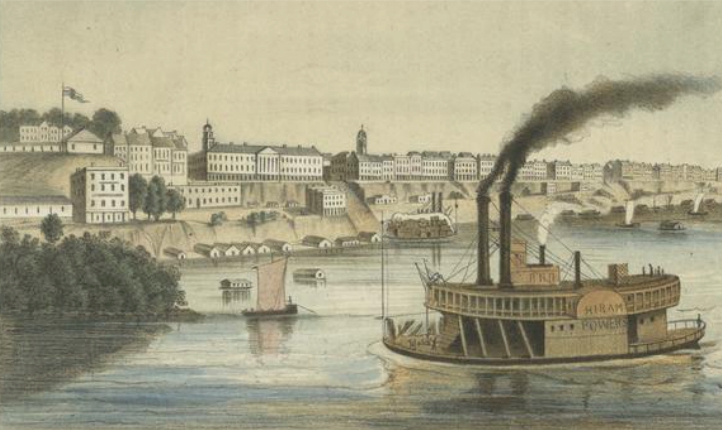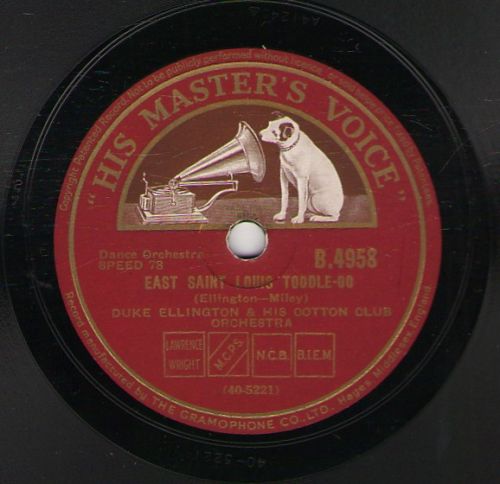|
Charles Lloyd (jazz Musician)
Charles Lloyd (born March 15, 1938) is an American jazz musician and composer. He primarily plays tenor saxophone and flute and occasionally other reed instruments, including alto saxophone and the Hungarian tárogató. Lloyd's primary band since 2007 has been a quartet including pianist Jason Moran, acoustic bassist Reuben Rogers, and drummer Eric Harland. Early life and education Lloyd was born in Memphis, Tennessee on March 13, 1938. He grew up in Memphis, where he was exposed to blues, gospel, and jazz music. He is of African, Cherokee, Mongolian, and Irish ancestry. He was given his first saxophone at the age of nine and was riveted by 1940s radio broadcasts by Charlie Parker, Coleman Hawkins, Lester Young, Billie Holiday and Duke Ellington. His early teachers included pianist Phineas Newborn, Jr. and saxophonist Irvin Reason. His closest childhood friend was trumpeter Booker Little. As a teenager Lloyd played jazz with saxophonist George Coleman, Harold Mabern, ... [...More Info...] [...Related Items...] OR: [Wikipedia] [Google] [Baidu] |
Memphis, Tennessee
Memphis is a city in Shelby County, Tennessee, United States, and its county seat. Situated along the Mississippi River, it had a population of 633,104 at the 2020 United States census, 2020 census, making it the List of municipalities in Tennessee, second-most populous city in Tennessee, the fifth-most populous in the Southeastern United States, Southeast, and the List of United States cities by population, 28th-most populous in the nation. Memphis is the largest city proper on the Mississippi River and anchors the Memphis metropolitan area that includes parts of Arkansas and Mississippi, the Metropolitan statistical area, 45th-most populous metropolitan area in the U.S. with 1.34 million residents. European exploration of the area began with Spanish conquistador Hernando de Soto in 1541. Located on the high Chickasaw Bluffs, the site offered natural protection from Mississippi River flooding and became a contested location in the colonial era. Modern Memphis was founded in 181 ... [...More Info...] [...Related Items...] OR: [Wikipedia] [Google] [Baidu] |
Reuben Rogers
Reuben Renwick Rogers (born November 15, 1974) is a jazz bassist from the Virgin Islands. Biography Born November 15, 1974, and raised in the Virgin Islands, Rogers was exposed to varieties of music that included calypso, reggae, gospel and jazz. In his formative years, Rogers received encouragement from his parents to explore his musical talent. He began with the clarinet, experimented with the piano, drums, and guitar, and at the age of 14 found his true passion in the bass. Under the eye of his high school band teacher, Georgia Francis, Rogers studied jazz with fellow Virgin Islanders Ron Blake and Dion Parson. Rogers received awards, grants, and scholarships from the St. Thomas Arts Council and other local organizations. This opened the door for his summer studies at Interlochen Arts Camp in Michigan and at Berklee College of Music in Boston. After completing their five-week summer program, Rogers was given a scholarship toward his studies. Rogers' musical education ... [...More Info...] [...Related Items...] OR: [Wikipedia] [Google] [Baidu] |
George Coleman
George Edward Coleman (born March 8, 1935) is an American jazz saxophonist known for his work with Miles Davis and Herbie Hancock in the 1960s. In 2015, he was named an NEA Jazz Master. Early life Coleman was born in Memphis, Tennessee. He was taught how to play the alto saxophone in his teens by his older brother Lucian Adams, inspired (like many jazz musicians of his generation) by Charlie Parker. Among his schoolmates were Harold Mabern, Booker Little, Frank Strozier, Hank Crawford, and Charles Lloyd. Later life and career After working with Ray Charles, Coleman started working with B.B. King in 1953, at which point he switched to tenor saxophone. In 1956 Coleman moved to Chicago, along with Booker Little, where he worked with Gene Ammons and Johnny Griffin before joining Max Roach's quintet (1958–1959). Coleman recorded with organist Jimmy Smith on his album '' House Party'' (1957), along with Lee Morgan, Curtis Fuller, Kenny Burrell, and Donald Bailey. Moving to ... [...More Info...] [...Related Items...] OR: [Wikipedia] [Google] [Baidu] |
Booker Little
Booker Little Jr. (April 2, 1938 – October 5, 1961) – accessed June 2010 was an American trumpeter and composer. He appeared on many recordings in his short career, both as a sideman and as a leader. Little performed with , , and Eric Dolphy and was strongly influenced by |
Phineas Newborn, Jr
Phineas Newborn Jr. (December 14, 1931 – May 26, 1989) was an American jazz pianist, whose principal influences were Art Tatum, Oscar Peterson, and Bud Powell. Biography Newborn was born in Whiteville, Tennessee, and came from a musical family: his father, Phineas Newborn Sr., was a drummer in blues bands, and his younger brother, Calvin, a jazz guitarist. He studied piano as well as trumpet, and tenor and baritone saxophone. Before moving on to work with Lionel Hampton, Charles Mingus, and others, Newborn first played in an R&B band led by his father on drums, with his brother Calvin on guitar, Tuff Green on bass, Ben Branch and future Hi Records star Willie Mitchell. The group was the house band at the now famous Plantation Inn Club in West Memphis, Arkansas, from 1947 to 1951, and recorded as B. B. King's band on his first recordings in 1949, as well as the Sun Records sessions in 1950. They left West Memphis in 1951 to tour with Jackie Brenston as the "Delta Ca ... [...More Info...] [...Related Items...] OR: [Wikipedia] [Google] [Baidu] |
Duke Ellington
Edward Kennedy "Duke" Ellington (April 29, 1899 – May 24, 1974) was an American Jazz piano, jazz pianist, composer, and leader of his eponymous Big band, jazz orchestra from 1924 through the rest of his life. Born and raised in Washington, D.C., Ellington was based in New York City from the mid-1920s and gained a national profile through his orchestra's appearances at the Cotton Club in Harlem. A master at writing miniatures for the three-minute 78 rpm recording format, Ellington wrote or collaborated on more than one thousand compositions; his extensive body of work is the largest recorded personal jazz legacy, and many of his pieces have become Standard (music), standards. He also recorded songs written by his bandsmen, such as Juan Tizol's "Caravan (1937 song), Caravan", which brought a Spanish tinge to big band jazz. At the end of the 1930s, Ellington began a nearly thirty five-year collaboration with composer-arranger-pianist Billy Strayhorn, whom he called his writ ... [...More Info...] [...Related Items...] OR: [Wikipedia] [Google] [Baidu] |
Billie Holiday
Billie Holiday (born Eleanora Fagan; April 7, 1915 – July 17, 1959) was an American jazz and swing music singer. Nicknamed "Lady Day" by her friend and music partner, Lester Young, Holiday made significant contributions to jazz music and pop music, pop singing. Her vocal style, strongly influenced by jazz instrumentalists, inspired a new way of manipulating Phrase (music), phrasing and tempo. Holiday was known for her vocal delivery and Jazz improvisation, improvisational skills. After a turbulent childhood, Holiday began singing in nightclubs in Harlem where she was heard by producer John Hammond (record producer), John Hammond, who liked her voice. Holiday signed a recording contract with Brunswick Records, Brunswick in 1935. Her collaboration with Teddy Wilson produced the hit "What a Little Moonlight Can Do", which became a jazz standard. Throughout the 1930s and 1940s, Holiday had mainstream success on labels such as Columbia Records, Columbia and Decca Records, Decca. H ... [...More Info...] [...Related Items...] OR: [Wikipedia] [Google] [Baidu] |
Lester Young
Lester Willis Young (August 27, 1909 – March 15, 1959), nicknamed "Pres" or "Prez", was an American jazz tenor saxophonist and occasional clarinetist. Coming to prominence while a member of Count Basie's orchestra, Young was one of the most influential players on his instrument. In contrast to many of his hard-driving peers, Young played with a relaxed, cool tone and used sophisticated harmonies, using what one critic called "a free-floating style, wheeling and diving like a gull, banking with low, funky riffs that pleased dancers and listeners alike". Known for his hip, introverted style, he invented or popularized much of the hipster jargon which came to be associated with the music. Early life and career Lester Young was born in Woodville, Mississippi, on August 27, 1909, to Lizetta Young (née Johnson), and Willis Handy Young, originally from Louisiana. Lester had two siblings – a brother, Leonidas Raymond, known as Lee Young, who became a drummer, and a sister, Irm ... [...More Info...] [...Related Items...] OR: [Wikipedia] [Google] [Baidu] |
Coleman Hawkins
Coleman Randolph Hawkins (November 21, 1904 – May 19, 1969), nicknamed "Hawk" and sometimes "Bean", was an American jazz tenor saxophonist.Yanow, Scot"Coleman Hawkins: Artist Biography" AllMusic. Retrieved December 27, 2013. One of the first prominent jazz musicians on his instrument, as Joachim-Ernst Berendt, Joachim E. Berendt explained: "There were some tenor players before him, but the instrument was not an acknowledged jazz horn". Hawkins biographer John Chilton described the prevalent styles of tenor saxophone solos prior to Hawkins as "mooing" and "rubbery belches". Hawkins denied being first and noted his contemporaries Happy Caldwell, Stump Evans, and Prince Robinson, although he was the first to tailor his method of Jazz improvisation, improvisation to the saxophone rather than imitate the techniques of the clarinet. Hawkins' virtuosic, arpeggiated approach to improvisation, with his characteristic rich, emotional, and vibrato-laden tonal style, was the main influen ... [...More Info...] [...Related Items...] OR: [Wikipedia] [Google] [Baidu] |
Charlie Parker
Charles Parker Jr. (August 29, 1920 – March 12, 1955), nicknamed "Bird" or "Yardbird", was an American jazz Saxophone, saxophonist, bandleader, and composer. Parker was a highly influential soloist and leading figure in the development of bebop, a form of jazz characterized by fast tempos, Virtuoso, virtuosic technique, and advanced harmonies. He was a virtuoso and introduced revolutionary rhythmic and harmonic ideas into jazz, including rapid Passing chord, passing chords, new variants of Altered chord, altered chords, and Chord substitution, chord substitutions. Parker was primarily a player of the alto saxophone. Parker was an icon for the hipster (1940s subculture), hipster subculture and later the Beat Generation, personifying the jazz musician as an uncompromising artist and intellectual rather than just an entertainer. Early life Charles Parker Jr. was born in Kansas City, Kansas, to Charles Parker Sr. and Adelaide "Addie" Bailey, who was of mixed Choctaw and African-A ... [...More Info...] [...Related Items...] OR: [Wikipedia] [Google] [Baidu] |
Gospel Music
Gospel music is a traditional genre of Christian music and a cornerstone of Christian media. The creation, performance, significance, and even the definition of gospel music vary according to culture and social context. Gospel music is composed and performed for many purposes, including aesthetic pleasure, religious or ceremonial purposes, and as an entertainment product for the marketplace. Gospel music is characterized by dominant vocals and strong use of harmony with Christian lyrics. Gospel music can be traced to the early 17th century. Hymns and sacred songs were often performed in a call-and-response fashion, heavily influenced by ancestral African music. Most of the churches relied on hand–clapping and foot–stomping as rhythmic accompaniment. Most of the singing was done ''a cappella''.Jackson, Joyce Marie. "The changing nature of gospel music: A southern case study." ''African American Review'' 29.2 (1995): 185. Academic Search Premier. EBSCO. Web. October 5, 201 ... [...More Info...] [...Related Items...] OR: [Wikipedia] [Google] [Baidu] |
Blues
Blues is a music genre and musical form that originated among African Americans in the Deep South of the United States around the 1860s. Blues has incorporated spiritual (music), spirituals, work songs, field hollers, Ring shout, shouts, chants, and rhymed simple narrative ballad (music), ballads from the African-American culture. The blues form is ubiquitous in jazz, rhythm and blues, and rock and roll, and is characterized by the Call and response (music), call-and-response pattern, the blues scale, and specific chord progressions, of which the twelve-bar blues is the most common. Blue notes (or "worried notes"), usually thirds, fifths or sevenths flattened in Pitch (music), pitch, are also an essential part of the sound. Blues shuffle note, shuffles or walking bass reinforce the trance-like rhythm and form a repetitive effect known as the groove (popular music), groove. Blues music is characterized by its lyrics, Bassline, bass lines, and Instrumentation (music), instrumen ... [...More Info...] [...Related Items...] OR: [Wikipedia] [Google] [Baidu] |






